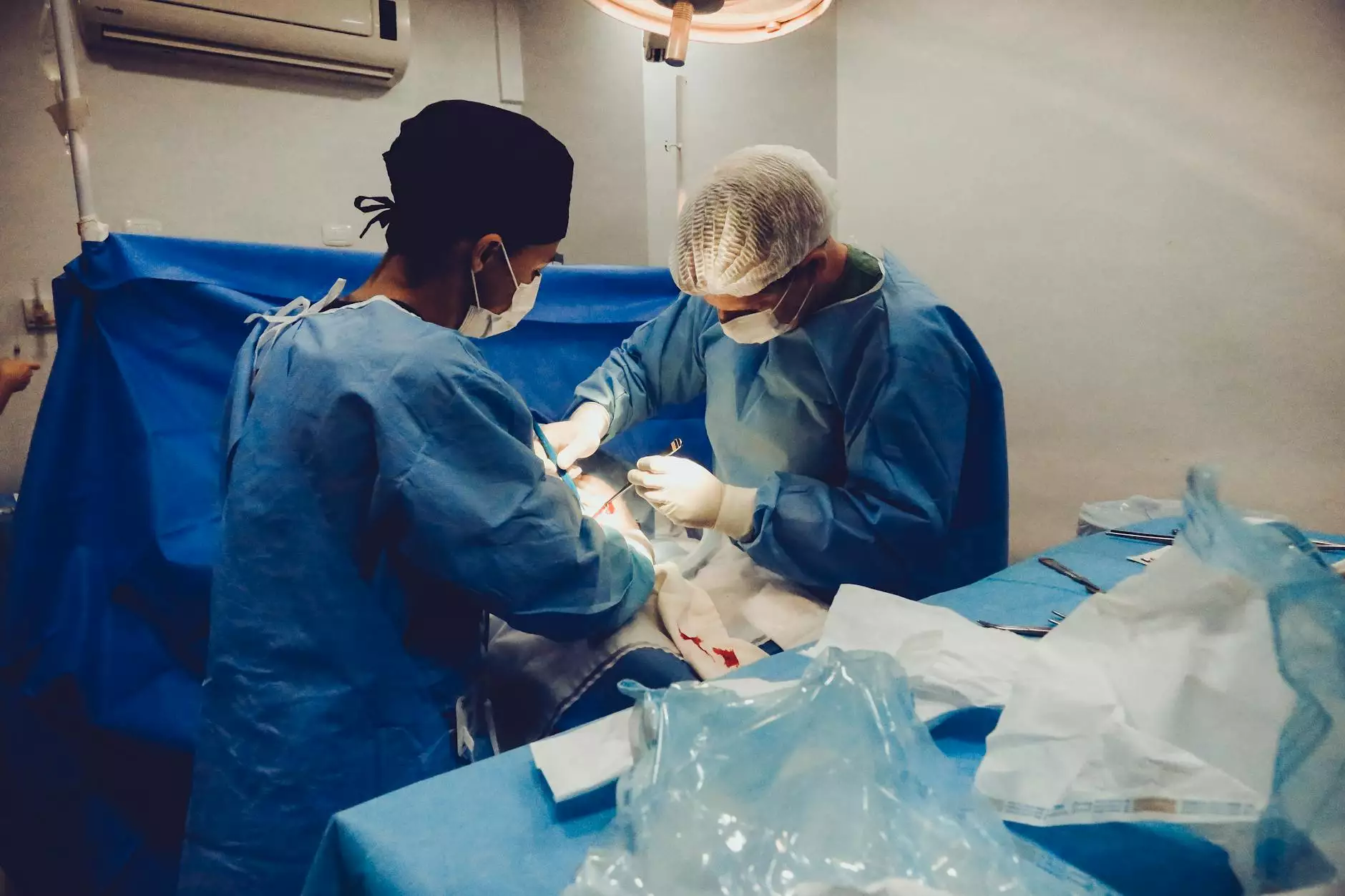Understanding Hystero Salpingo Oophorectomy: A Comprehensive Guide

The term hystero salpingo oophorectomy may sound complex and intimidating, but it is an important surgical procedure for women's health that combines the removal of the uterus, fallopian tubes, and ovaries. This article aims to demystify this procedure, providing detailed insights into its necessity, methodology, potential risks, recovery, and more. If you're seeking clarity about this operation and its implications, you've come to the right place.
What is Hystero Salpingo Oophorectomy?
Hystero salpingo oophorectomy (HSO) refers specifically to the surgical removal of the uterus (hysterectomy), the fallopian tubes (salpingectomy), and the ovaries (oophorectomy). This procedure is typically performed in cases where conditions such as cancer, severe endometriosis, or chronic pelvic pain are present.
When is Hystero Salpingo Oophorectomy Recommended?
There are several medical conditions that may necessitate a hystero salpingo oophorectomy. Understanding the reasons behind this surgery can help patients and their families make informed decisions. Some common indications include:
- Ovarian Cysts: Large or persistent ovarian cysts that do not respond to other treatments.
- Endometriosis: Severe endometriosis that affects quality of life and fertility.
- Uterine Fibroids: Large fibroids that cause pain, heavy bleeding, or other complications.
- Gynecological Cancers: Early-stage cancers such as ovarian, uterine, or fallopian tube cancer.
Understanding the Procedure
The hystero salpingo oophorectomy procedure can be performed either laparoscopically (minimally invasive) or through an open abdominal approach, depending on the individual case and the surgeon’s recommendation. Here’s a closer look at the procedure:
Laparoscopic Approach
During laparoscopic surgery, several small incisions are made in the abdominal wall. A laparoscope (a thin, lighted tube with a camera) is inserted to guide the surgeon in the removal of the uterus, fallopian tubes, and ovaries. This method often results in:
- Reduced blood loss
- Shorter recovery time
- Minimal scarring
- Less postoperative pain
Open Abdominal Surgery
In cases where more extensive exploration or removal is needed, an open abdominal approach may be utilized. This involves a larger incision and a more comprehensive view of the pelvic area. It may be warranted in cases of:
- Extensive disease
- Obesity
- Previous surgeries that complicate laparoscopic surgery
The Benefits of Hystero Salpingo Oophorectomy
While the loss of reproductive organs can be distressing for many women, the benefits of undergoing a hystero salpingo oophorectomy can outweigh the emotional and physical impacts. Here are some notable advantages:
- Relief from Symptoms: Many women experience significant relief from chronic pain, heavy bleeding, and other debilitating symptoms.
- Prevention of Disease Progression: In patients with cancer or pre-cancerous conditions, this surgery can prevent the spread of disease.
- Improved Quality of Life: After recovery, many women report enhanced quality of life and overall well-being.
Potential Risks and Considerations
Like any surgical procedure, hystero salpingo oophorectomy carries certain risks. While serious complications are relatively uncommon, patients should be aware of potential side effects, which may include:
- Infection: Risk of infection at the surgical site or within the pelvic region.
- Bleeding: Excessive bleeding requiring transfusion or additional procedures.
- Damage to Surrounding Organs: Unintentional injury to nearby organs such as the bladder or bowel.
- Hormonal Changes: Removal of the ovaries leads to cessation of hormone production, potentially resulting in menopause.
The Recovery Process
Recovery from a hystero salpingo oophorectomy varies between individuals, largely depending on the type of surgery performed. Here are common steps in the recovery process:
Postoperative Care
After surgery, patients should expect to stay in the hospital for a day or two for monitoring. Key aspects of pre-discharge care include:
- Managing pain with prescribed medications.
- Monitoring for signs of infection.
- Ensuring proper incision care.
Home Care Recommendations
Once discharged, home care focuses on aiding recovery and includes:
- Resting adequately and avoiding strenuous activities for several weeks.
- Following dietary recommendations to aid healing.
- Scheduling follow-up appointments for ongoing evaluation and support.
- Engaging in gentle, appointed physical activity as cleared by the surgeon.
Psychological and Emotional Considerations
Undergoing a hystero salpingo oophorectomy can be an emotionally charged experience that influences psychological well-being. Women may face a range of feelings, from relief to grief, especially regarding fertility and hormonal changes. It's crucial to address these feelings through:
- Counseling: Professional counseling can provide emotional support and coping strategies.
- Support Groups: Joining support groups for women who have undergone similar procedures can be beneficial.
- Open Communication: Discussing concerns and feelings with a partner or loved ones can aid in emotional healing.
Conclusion
The decision to undergo a hystero salpingo oophorectomy is a significant one, often marked with numerous considerations and emotions. Understanding the procedure, its implications, and potential for enhancing quality of life is paramount. For women facing this decision, knowledge is empowering, and consulting with qualified professionals, such as those at drseckin.com, can make all the difference. A health care team can offer personalized guidance, ensuring that every aspect of the treatment is handled with expertise, empathy, and care.
Ultimately, hystero salpingo oophorectomy can be a life-changing procedure that opens a path to health and well-being, allowing women to reclaim their lives following surgery. Through understanding, support, and quality medical care, the road to recovery can be navigated effectively.









